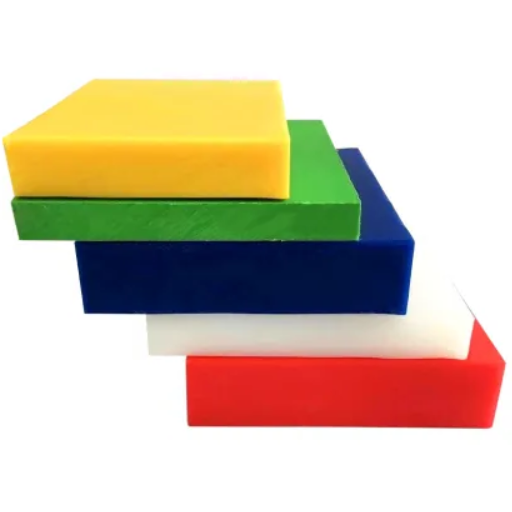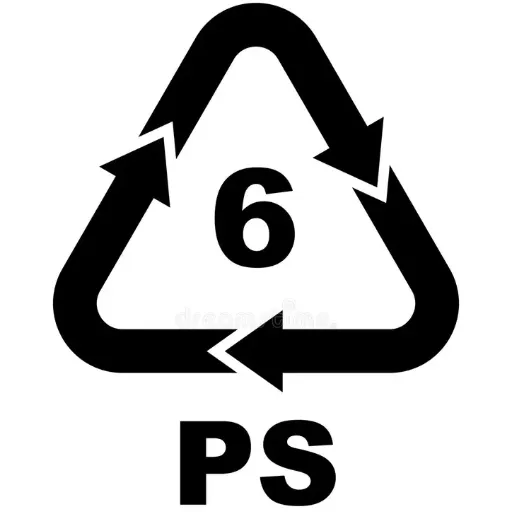Material performance under varying conditions might make or break a project in industrial and engineering applications. UHMW sets itself apart due to wear resistance, chemical resistance, and low friction. The temperature rating, the aspect most often overlooked, may be a significant concern. Consideration of UHMW’s behavior under extreme temperatures will help optimize its use and avoid expensive in-situ failures. Our article devotes a considerable amount of time to explaining the relevance of the temperature rating of UHMW and its impact on performance and reliability. Consequently, you will be able to understand better how to incorporate UHMW in your operations to optimize longevity and efficiency. Join us as we explore one essential feature of a beneficial material.
Overview of UHMW and Its Properties

What is UHMW-PE?
Ultra-High Molecular Weight Polyethylene (UHMW-PE) is a type of thermoplastic characterized by its unique attributes, primarily related to strength and versatility. Because the molecular weight lies between 3.1 and 5.0 million g/mol or more, it exhibits superior abrasion resistance, a very low coefficient of friction, and can be utilized in demanding applications. UHMW-PE has excellent impact strength, remaining tough without cracking or breaking even under extreme mechanical stress conditions. This surface offers release with high chemical resistance and temperature tolerance, ranging from approximately-22°F to 180°F (- 30 °C to 82°C). The material is widely used in industries such as manufacturing, food processing, mining, and transportation.
Additionally, the material complies with FDA and USDA regulations for the food and beverage industries and exhibits high industrial resiliency. Its resistance to moisture absorption also ensures that the material will not absorb moisture and retain dimensional stability in submerged and wet conditions, setting it apart from standard materials used for conveyor systems, liners, and marine equipment, which may fail.
Key Properties of Ultra-High-Molecular-Weight Polyethylene
Abrasive Wear Resistance: Unmatched UHMW-PE wear and abrasion resistance provide the most significant degree of durability under the most severe service conditions. Examples include belt conveyor systems, such as those in chutes, where impact and friction are continuous.
Impact Strength: The material remains intact and offers high impact resistance when subjected to extreme pressure. This resistance makes it a key function in the mining and heavy machinery industries, which require sturdy and serviceable materials.
Low Coefficient of Friction: UHMW-PE offers a smooth surface with a very low frictional value, which reduces material accumulation while allowing for greater flow during powder conveyance and grain transportation. This property contributes to greater operational efficiency and less upkeep.
High Chemical Resistance: Its resistance to various chemicals, including acids, alkalis, and organic solvents, enables it to be applied safely and temporarily even under harsh conditions. This resistance is used in chemical tanks, pipes, and seals.
Moisture-Absorption Resistance: UHMW-PE does not absorb water, assuring dimensional stability and retention in wet or submerged environments. It is a plus in marine applications, including dock bumpers, fenders, and underwater mechanical components.
Excellent Temperature Performance: The material retains its mechanical properties over a broad range of temperatures, typically between -200°F and 200°F, making it suitable for applications where the process industry or refrigeration requires extreme conditions.
FDA and USDA Compliance: UHMW-PE is primarily food-grade and certifiable under FDA and USDA guidelines, allowing for direct contact with food items. This unique property is well-suited for use in food-processing and packaging systems.
Lightweight Yet Strong: Strong enough for its weight, and with a high rigidity value, this material allows for a reduction in the full system weight without compromising durability and performance. This fact is a real boon for the transportation and machinery industries, particularly in terms of parts.
With the suite of distinctive properties listed above, Ultra-High-Molecular-Weight Polyethylene is highly flexible, with applications across various sectors, including automotive, construction, food processing, and marine engineering.
Differences Between UHMW and Other Polyethylenes
Ultra-High-Molecular-Weight Polyethylene distinguishes itself from other types of polyethylene due to its molecular structure and properties: Typically, its molecular weight is more than 3 million grams per mole, so it is significantly higher in molecular weight than High-Density Polyethylene(HDPE), Low-Density Polyethylene (LDPE), or Linear Low-Density Polyethylene (LLDPE). This low molecular weight favors the abrasion resistance, impact strength, and durability of UHMW, thus making it more popular in applications where a small degree of wear is expected.
Moreover, UHMW exhibits significantly lower friction coefficients than other polyethylenes, offering excellent wear and self-lubricating properties in environments where increased surface drag should be minimized, such as conveyor systems or sliding operations. In contrast to HDPE or LDPE, UHMW keeps its physical integrity under extreme conditions and can resist cracking and deformation even when exposed to low temperatures or harsh environments.
Additionally, while HDPE is resistant to chemicals, UHMW is even more resistant against a broader range of chemicals, corrosive substances, and solvents. The higher melting point and the consequential difficulty in processing are two aspects that UHMW loses in comparison with the ease with which HDPE and LDPE are processed.
From a cost perspective, UHMW has a higher price than most standard HDPE or LDPE. Still, for specialized applications, its longevity and performance provide commendable value to industries ranging from food processing to industrial engineering. These major distinctions emphasize UHMW-PE’s status as a top-tier material for custom-made high-performance applications.
Temperature Rating of UHMW
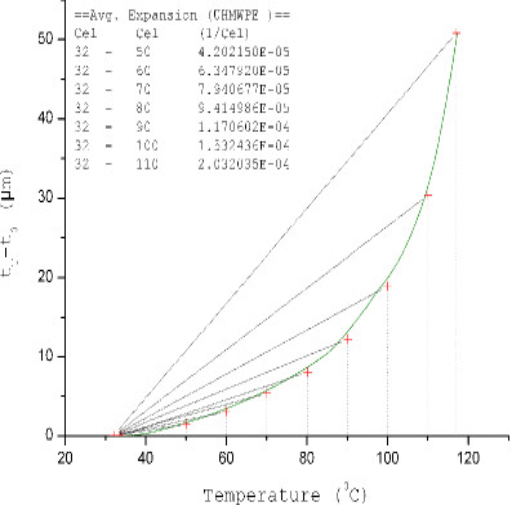
Understanding Operating Temperature Limits
Ultra-high molecular weight polyethylene performs best under a wide range of operating conditions, particularly in demanding environments. Functional temperatures usually range from -200°F to 180°F (-129°C to 82°C), making them ideal for cold storage, cryogenic environments, and various industrial applications. However, exposure to temperatures of more than 180°F (82°C) can render UHMW poorly>degraded and may affect its mechanical properties, tensile strength, and wear resistance.
In high-temperature environments, deformation or melting becomes a significant concern and must therefore be treated as a key design consideration. Review and consideration of alternative materials will always be required for applications involving prolonged high-temperature exposure, as UHMW’s benefits are optimized in moderate to low temperatures. An engineer will utilize this knowledge most effectively to maximize the durability and efficiency of UHMW-PE in temperature-sensitive applications.
Factors Affecting the Temperature Performance of UHMW
The temperature performance of UHMW is influenced by numerous internal and external factors, which in turn impact its durability, structural stability, and efficacy in various applications. Knowledge about multiple factors helps one fine-tune usage in both moderate and extreme environments.
Molecular Weight: The molecular weight of UHMW-PE has a significant impact on its thermal resistance. Resistance to thermal deformation and structural stability under fluctuating temperatures is improved when molecular weights are higher. This property, therefore, serves in maintaining mechanical integrity when faced with demanding applications.
Crystallinity: The other property that affects temperature resistance in UHMW-PE is its degree of crystallinity. Higher crystallinity contributes to higher thermal stability and a higher melting point, which are essential for applications exposed to high temperatures for extended periods.
Thermal Conductivity and Heat Absorption: UHMW-PE exhibits poor thermal conductivity, which hinders heat transfer within the material. While this limits fast temperature variations, it also means a localized heat buildup can occur if there is sustained heat load. Properly designed equipment can counter such problems in the long-term performance ability.
Environmental Influences: Temperature changes brought about by external factors, such as UV radiation or moisture, may impact the temperature performance of UHMW. In doing so, UV radiation quickens degradation at higher temperatures, while chemical exposure may negatively affect the stability of UHMW.
Load Bearing at Elevated Temperatures: Load bearing under substantial mechanical loading at elevated temperatures is a critical consideration. Under combined thermal and mechanical stresses, UHMW-PE may exhibit accelerated creep or deformation, making load constraints a crucial consideration during material selection.
Modifications and Additives: Today, most UHMW-PE polymers have been modified and enhanced with thermal stabilizers, ceramic fillers, or glass reinforcements to improve heat resistance. Hence, heat modification improves the maximum upper temperature of the material and reduces the likelihood of degradation in heat-intensive applications.
By weight-fitting such factors into material choice and design, the engineer can ensure that UHMW-PE performs at its best under widely diverse thermal conditions. Research and development in materials science and additive technology continue to push the operational temperature capability of UHMW higher and higher. This opens up possibilities for UHMW to tackle increasingly demanding applications.
Comparison of UHMW Temperature Ratings with Other Plastics
When evaluating UHMW-PE versus other common plastics for temperature resistance, a distinct and specialized distinction exists. Generally, UHMW-PE has a maximum continuous operating temperature of approximately 180°F (82°C), making it suitable for applications that do not involve high thermal exposure. Its temperature resistance, however, falls short of engineering plastics such as PTFE, which can withstand temperatures up to 500°F (260°C), and PEEK, which can withstand temperatures up to 482°F (250°C). On the other hand, UHMW combines better temperature resistance with LDPE, which can withstand a maximum temperature of around 160°F (71°C), and HDPE, which can withstand around 230°F (110°C).
Additionally, UHMW-PE performs well in low-temperature settings due to its excellent impact resistance and ability to retain its mechanical properties at temperatures as low as -200°F (-129°C). This durability contrasts with plastics like PVC and ABS, whose properties change significantly at extremely low temperatures. Also noteworthy is that UHMW-PE’s rate of thermal expansion is substantially greater than that of glass-filled plastics, such as PEEK; however, this is manageable within the design by allowing for dimensional changes in response to temperature variations.
While UHMW-PE cannot quite rival, in terms of high-temperature resistance, that of high-performance polymers such as PPS or polyimides, its wear resistance, combined with its self-lubricating properties and chemically inert characteristics, clearly defines its place of use in moderately high-temperature conditions. Understanding this balance, therefore, enables the transport, food, and medical equipment industries to position themselves effectively in terms of their operating environments. This comparison effectively illustrates the importance of selecting materials based explicitly on their temperature rating and the priority of their application.
Impact of Temperature on UHMW Performance
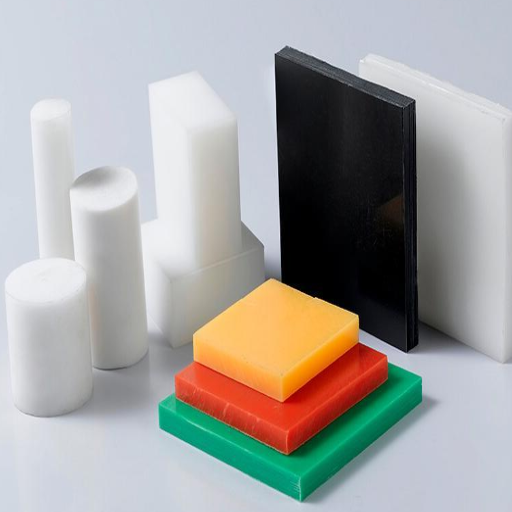
UHMW and High-Temperature Effect on Properties
Ultra-high molecular weight polyethylene (UHMW) is well known for its impact-resistant and performance characteristics in almost every operating condition; however, its properties are compromised at high temperatures. When the ambient temperature exceeds the thermal limit of UHMW, typically 180°F to 200°F (82°C to 93°C), UHMW tends to soften and lose its abrasion resistance, tensile force resistance, and mechanical loading capabilities. With time, degradation accelerates with exposure to higher temperatures, unless some degree of thermal treatment is provided, which can lead to warping, dimensional instability, or cracking under load.
Another negative consequence of exposure to higher temperatures is the slight increase in the coefficient of friction, or, in other words, the deterioration of self-lubricating qualities. Therefore, the material should be avoided under high-load conditions and in high-velocity applications. Another major drawback of UHMW is that thermal expansion could cause distress in exact interference-fit joints, especially in environments where tolerances are tight. However, thanks to numerous developments in UHMW and modified formulations, many are now able to withstand structural disintegration under moderate temperatures, making it productive in conveyor systems, packaging-shrinking machinery, and other such applications. Thus, the improvements mentioned earlier are making inroads into commercial use, even though they face thermal challenges.
Low-Temperature Resistance of UHMW-PE
Ultra-high-molecular-weight polyethylene (UHMW-PE) is widely known for its low-temperature resistance. Its unique molecular design ensures that the material still shows flexibility and toughness even at extreme cold. In contrast to polymers that become brittle at low temperatures, UHMW-PE retains considerable resistance to impact and is, therefore, suitable for use in Arctic environments or cryogenic systems.
UHMW-PE has been established to work well at -200°C (-328°F), retaining mechanical properties such as wear resistance and low friction, hence making it an excellent candidate for ice-rink flooring, freezer spacers, and components used in cold-storage facilities. The ability to resist cracking and deterioration from the cycles of freezing and thawing temperatures will only enhance the position of UHMW-PE in harsh environments.
The continuous development of UHMW-PE blends has further improved the material’s ability to perform well at low temperatures. Various formulations of the blend have been enhanced with additives that would resist cold stress while retaining durability. It is these developments that continue to highlight the ability of UHMW-PE to operate in industries that require materials to withstand severe cold conditions.
Thermal Stability and Degradation of UHMW
Ultra-high-molecular-weight polyethylene (UHMW-PE) exhibits excellent thermal stability across a wide range of temperatures, making it suitable for very demanding applications. The high melting point, generally about 260°F (127°C), would reasonably mean that deformation or softening should occur at very little thermal stress. However, like many polymers, UHMW-PE suffers from thermal-related problems arising from prolonged exposure to heat. If subjected to high temperatures for a long time, especially when above its temperature threshold, degradation would be, in fact, oxidative degradation, which causes the breakdown of polymer chains, hence loss of mechanical strength and wear resistance.
To alleviate this, stabilizers and antioxidants are often incorporated into UHMW formulations. They essentially work by scavenging free radicals responsible for oxidative degradation. The most recent advancements demonstrate that by advertising optimized formulations, the lifetime of UHMW-PE can be extended in high-temperature environments, thereby providing an even better opportunity for applications in manufacturing, automotive, and medical engineering.
Research has shown that heat-accelerated aging tests demonstrate the ability of UHMW-PE to remain stable under thermal cycling. For example, tensile strength and impact resistance stayed within acceptable ranges after prolonged thermal exposure, thus attesting to the material’s reliability. Its thermal limit is not indefinite, but further innovation in the polymer’s composition helps increase the range of applications in temperature-critical fields.
Applications of UHMW Based on Temperature Ratings
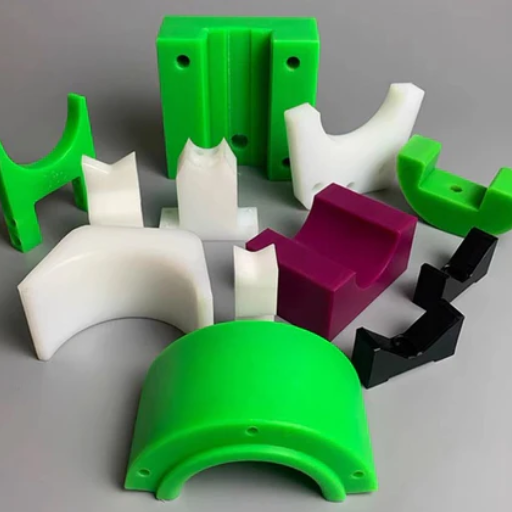
Use in High-Temperature Environments
UHMW-PE is a material that boasts a versatile reputation, even in high-temperature-related applications, due to its excellent thermal stability and durability. Whenever an industry requires the selection of materials that can withstand high temperatures without structural failure, UHMW-PE is the apt choice. For instance, it is used by manufacturers in the automotive and aircraft industries for bushings, gears, and seals because it can maintain mechanical performance at elevated temperatures.
UHMW-PE is also increasingly used in extreme thermal cycling across various industries, including those dealing with food processing systems and conveyor systems. In these situations, materials must resist warping or degradation due to the periodicity of hot and cold temperature cycles. Field reports have also demonstrated how UHMW-PE can reduce heat generation due to friction, thanks to its very low coefficient of friction and self-lubricating properties; consequently, this enhances operational efficiency and service life. With continuous development in UHMW-PE formulations, its applications are expanding toward more severe thermal conditions, offering economical solutions for those very essential high-temperature applications.
Performance in Cold Weather Applications
UHMW-PE stands out in cold-weather applications because of its excellent impact resistance and maintainability at low temperatures. While many materials go brittle at sub-zero temperatures, UHMW-PE maintains its integrity and toughness even when subjected to temperatures as low as -200°F (-129°C). Thus, this provides a solution for assurance in industries that operate in icy environments, such as arctic mining, cold storage facilities, and the outdoors, where structural components are exposed to cold climates. It maintains flexibility and resists cracking at low temperatures, ensuring that equipment and machinery fabricated from UHMW-PE can function efficiently and reduce maintenance costs, resulting in less downtime.
Another primary feature of UHMW-PE in cold-weather applications would be its self-lubricating properties and the lowest coefficient of friction. These features significantly inhibit ice adhesion, ensuring the smooth operation of components in chilled and freezing climates. For instance, conveyor systems or guide rails in refrigerated warehouses or on acres of snowy terrain, using UHMW-PE materials, will help curtail ice buildup and ensure operational efficiency at high levels. Moreover, the feature of high abrasion resistance ensures that the longevity of applications is not compromised by wear and tear from ice, snow, or environmental factors, all while being a cost-effective alternative to conventional materials like steel. The recent advancement of UHMW-PE composites has expanded the application spectrum in cold weather by incorporating additives that enhance thermal conductivity and resistance to stress cracking during freeze-thaw cycles. This development renders UHMW-PE more viable for harsh environments, making it the material of choice across various industries where excellence and dependability at sub-zero temperatures are imperative. In addition to being lightweight and easy to fabricate, this continues to qualify UHMW-PE as a material that meets current operational challenges in pursuit of more sustainable and efficient solutions in severe cold conditions.
Case Studies of UHMW in Different Industries
Automotive Industry: This UHMW-PE is well-suited for automotive applications due to its high wear resistance and lightweight properties, which extend component life while enabling the car to be more fuel-efficient. Sliding guides, rails, chain guides, and bushings are other applications of UHMW-PE, which are used to reduce friction between the components, thereby reducing maintenance and enhancing the overall performance of the vehicle. Studies have shown that cars with UHMW-PE components exhibit a 20% reduction in material wear compared to conventional polymers, thereby demonstrating their durability in critical applications.
Food and Beverage Processing: It is highly susceptible to all areas of food and beverage processing due to its non-toxic, FDA-compliant nature. The material is used in conveyor systems, cutting boards, and chute liners due to its low coefficient of friction, chemical resistance, and ease of cleaning. Facilities that use UHMW-PE liners have reported a significant decline in contamination hazards and operational downtime during production compared to those using conventional materials. It also resists variations in temperature for regulatory requirements and high usage in long-life environments.
Mining and Bulk Handling: Mining and bulk handling operations undergo some of the harshest wear and tear scenarios. UHMW-PE excels in this setup due to its impact resistance and self-lubricating properties, making it suitable for use as outside liners, dump truck liners, hopper walls, and chute liners. Another recent application demonstrated that mine operators switching from conventional steel liners to UHMW-PE experienced a 35% reduction in material sticking during wet handling, accompanied by improved efficiency and reduced material accumulation.
Healthcare Applications: UHMW-PE has well-documented health applications for orthopedic implants, such as hip and knee replacements. It offers biocompatibility, wear resistance, and very high impact strength, making it suitable for longer-lasting and reliable medical devices. Clinical evidence shows that joint replacements using UHMW-PE inserts can remain satisfactorily operative for over 20 years, significantly improving both the quality of life for patients and reducing the number of revision surgeries performed. This long-term reliability also keeps it at the cutting edge of medical technology.
Marine and Offshore Industries: Marine and offshore environments require materials that stand against constant water, UV ray, and friction. UHMW-PE is domestically employed in shipbuilding activities for fender systems, dock bumpers, and bearing applications. It showed excellent resistance to corrosion and water absorption, with its high capacity to bear loads. Testimony from one port redesign and construction project documented the installation of UHMW-PE fender pads, which resulted in a 50% extended service life and reduced maintenance costs due to their high wear resistance in saltwater conditions.
Such case studies demonstrate the ability of UHMW-PE to operate in a wide variety of industries, thereby highlighting the tremendous attributes of UHMW-PE in addressing modern operational challenges related to performance, durability, and efficiency.
Advancements in UHMW Technology
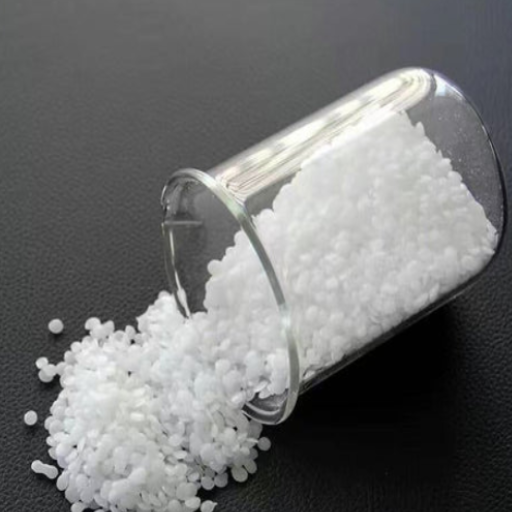
Innovations in UHMW-PE Formulations
It amazes me when I reflect on the innovations in UHMW-PE formulations that have taken this already impressive material even further. Over the years, manufacturers have aimed to customize UHMW-PE for specific uses by introducing additives that enhance performance and/or by utilizing more advanced processing techniques. Fillers such as glass fibers or ceramics have increased strength and dimensional stability, making them stronger for extremely heavy-duty industrial uses. Of course, other grades of the material have been developed, which are self-lubricating or anti-static, allowing them to be used where friction is high or where machinery is susceptible to static.
In my opinion, the true revolution in UHMW-PE innovations pertains to the development of UV-resistant and flame-retardant versions. As these enhanced formulations become more common, UHMW-PE demonstrates its adaptability in transitioning from outdoor environments to safety-critical settings, including infrastructure projects and aerospace components. With such enhancements, the versatility of the material continues to expand, fulfilling new market requirements while maintaining its fundamental properties—strength, frictional resistance, and impact strength.
I find it interesting how sustainability has influenced innovations in UHMW-PE. Manufacturers have begun searching for eco-friendly processing methods and incorporating recycled materials to reduce environmental damage. These efforts align with global initiatives toward greener materials, while still supporting UHMW-PE in maintaining its high level of performance. All of these developments, in addition to boosting the technical merits of UHMW-PE, have enhanced its recognition as an indispensable material for various other industries.
Integration of Carbon Fibers for Enhanced Performance
From my perspective, the injection of carbon fibers into UHMW-PE appears truly revolutionary for enhancing its performance efficiencies, marking a fundamental paradigm shift in materials science. The carbon fibers bring lightweight to the table. At the same time, UHMW-PE contributes its durability and resistance to wear, combining to produce a composite that exceeds all expectations for strength, stiffness, and fatigue resistance. Carbon fibers impart additional structural integrity to UHMW-PE without compromising its flexibility, thereby favoring their use in applications that require minimal support for high mechanical resistance.
I believe this innovation will open many doors, as it is widely accepted in various applications, particularly in aerospace, automotive, and sports equipment, where materials must strike a balance between efficiency and strength under demanding conditions. The carbon fiber-reinforced UHMW-PE is capable of withstanding extreme pressures while also reducing weight (hence energy savings and improving functionality). Also, because the material naturally complements each other, the composite will preserve the self-lubricating and low-friction characteristics of UHMW-PE, which is excellent for moving parts and high-performance machinery.
I can only imagine the possibilities such an integration has in store for the future. Further development of bonding methods, coupled with scaling up, will continue to increase applications for carbon fiber-reinforced UHMW-PE. This innovation is a clear illustration of how material engineering can respond to evolving industry needs by pushing boundaries in both design and technological advancements.
The Role of Tivar™ H.O.T in Temperature Management
From my perspective, Tivar™ H.O.T proves to be an excellent material for temperature management in high-demand industrial applications. The material excels in retaining its physical properties during prolonged exposure to higher temperatures, unlike ordinary polyethylene types, in my experience. Its strength of wear resistance, dimensional stability under extreme conditions, and thermal endurance make Tivar™ H.O.T. a choice for applications requiring that level of resistance. It can retain its properties at temperatures as high as 275°F (135°C), hence ensuring that equipment will have minimal downtime and extended service life. This material is especially valued due to its improved oxidation resistance, which is highly desirable in a working environment with fluctuating temperature changes or prolonged exposure to heat, as it reduces thermal aging. I’ve found it mostly valuable for food processing, conveyor systems, and packaging industries, where high operating temperatures with reliable and consistent performance are not only preferable but also a must. This translates to fewer maintenance intervals, resulting in smoother operations, which benefits efficiency and saves costs.
With the inclusion of Tivar H.O.T. in a high-temperature application, I have successfully solved thermal issues where everything else fails. The great service performance, coupled with ease of machining and high precision, means that this material can be used to optimize equipment working in very demanding thermal conditions. Tivar H.O.T. stands as evidence to me of how material innovation can address complex operational needs and deliver better results.
Reference Sources
-
UHMW FAQs – Frequently Asked Questions about UHMW
Provides details on the temperature range of UHMW, including continuous and intermittent operating limits. -
TIVAR™ H.O.T – Heat Resistant UHMW-PE | MCG
Discusses heat-resistant UHMW-PE and its performance at elevated temperatures up to 135°C (275°F). -
Attributes and Applications – UHMW
Explains the continuous use temperature range of UHMW and its ability to maintain form under heat. -
UHMW
Covers the properties and common uses of UHMW, including its temperature resistance and industrial applications. -
UHMW-PE – Versions, Uses, Limitations
Highlights different versions of UHMW-PE and their heat deflection temperatures, including limitations. - Top Plastic Pellets Suppliers in China
Frequently Asked Questions (FAQs)
What is the temperature rating of UHMW plastic?
UHMW, or ultra-high-molecular-weight polyethylene, usually has a temperature rating of up to 180°F (82°C), within which it can perform satisfactorily. The performance of the polymer varies with formulation and additives; for instance, some grades of UHMW are capable of maintaining their essential performance requirements at elevated operating temperatures. This makes UHMW favorable for applications in various industries, from food processing to automotive. The abrasion resistance and impact strength provided by UHMW grant durability in highly hostile environments.
How does the molecular weight of UHMW affect its properties?
The molecular weight of UHMW polyethylene significantly enhances its strength properties, including tensile strength and impact resistance. Polyethylene with a high molecular weight confers excellent properties, particularly in wear applications. This combination of high molecular weight and extremely low surface friction enables UHMW to perform in various industrial manufacturing environments. Moreover, these properties are retained over an extensive range of temperatures, thus making UHMW a trusted material for use in both low- and high-temperature environments.
What does UHMW offer in terms of key performance properties for food processing?
In food processing, UHMW offers very low moisture absorption and chemical resistance, and complies with FDA regulations. Its self-lubricating property reduces friction, thereby enhancing smoother operations in machinery. In addition, the wear resistance of UHMW is key for dairy applications where it’s used as a wear part. Moreover, the extended temperature range in which the performance properties can be maintained allows for use in various food processing techniques, such as thermoforming and extrusion.
Can UHMW be blended with other materials to enhance its properties?
Yes, UHMW can be blended with other materials, such as carbon fibers or nylon, to enhance its strength and stiffness. These blends can produce a composite that further enhances the performance properties of UHMW, thereby rendering it more suitable for even more demanding applications. For example, carbon fibers can dramatically improve tensile strength and impact resistance. This enables specialized applications to be undertaken using UHMW, such as those in the automotive industry or for high-performance wear parts.
How does UHMW compare to high-density polyethylene (HDPE)?
The two are thermoplastics, but UHMW has a significantly higher molecular weight and consequently better mechanical properties. The abrasion resistance and impact strength of UHMW surpass that of HDPE, making it suitable for heavy-duty applications. Additionally, UHMW performs well over a broad temperature range, whereas HDPE is relatively insensitive to elevated temperatures. Thus, UHMW presents a relatively less costly alternative for applications that demand durability and strength, especially in the packaging and manufacturing industries.
What is the significance of corrosion and chemical resistance in UHMW?
The exceptional corrosion and chemical resistance of UHMW is vital in industries where exposure to solvents, acids, or other corrosive chemicals is a daily occurrence. Such a property ensures that UHMW parts can withstand harsh environments without degradation. Being resistant to oxidation and retaining its initial structure in almost all cases over time, UHMW is a suitable choice for applications that require this property. Furthermore, its low moisture absorption rate enhances its longevity, further adding to its suitability for both indoor and outdoor use.

